The following Articles and Images have been added to the database
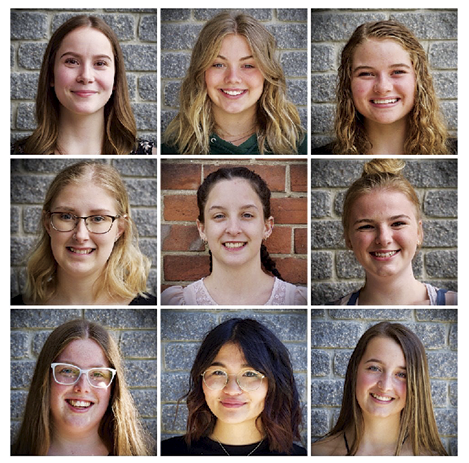
Nine impressive young women recently received Education Awards from the CFUW (Canadian Federation of University Women) Perth and District club to help them achieve their post-secondary educational goals. Supporting the education of women and girls is a major aim of CFUW.
The 2020 recipients are: Alesha Barber-Williams, Summer Clair, Cassidy Drummond, Mikayla Gemmell, Lili Hansen, Zoe Ingleby, Christina Reid and McKinley Van Klei. A special award was also presented this year in celebration of CFUW Perth and District’s 50th Anniversary (1970-2020). It was given to Masters student Aja Rowden.
The recipients come from local municipalities including Almonte, Elgin, Jasper, Carleton Place, Perth and Smiths Falls. Their educational plans encompass a wide range of disciplines: Medical Professional, Nursing, Dental Assisting, Commerce, Environmental Science, Sports Studies, Arts, Cognitive Science and Engineering.
These women have set clear goals for themselves and have already demonstrated their maturity, intelligence, determination and community spirit in high school. CFUW Perth and District is proud to be able to assist such motivated members of our community.
CFUW Perth and District publicizes its awards through its website <cfuwperthanddistrict.wordpress.com>, Facebook page and local media. Club volunteers advise local schools and youth organizations that the application process is open to girls and women who can demonstrate a need for financial support with their post-secondary studies. This year 29 applications were received, and the volunteers had the difficult job of short-listing to a number that could be funded with this year’s resources. The final nine successful applicants will receive their awards at the beginning of the university year in September.
Financing for the 2020 awards came primarily from the club’s major annual fundraising activity, the Heritage Perth Christmas House Tour. Eight households generously allowed visitors to see their special homes, which were decorated for Christmas by the homeowners and local florists and designers. Area restaurants and businesses also sponsored homes, purchased advertising, or provided gift certificates in support of the tour. By the time the event took place in early December 2019, over 200 volunteers had worked to make it a success.
CFUW Perth and District is grateful for all the support received each year from participants and visitors alike and congratulates the Education Award winners for 2020.
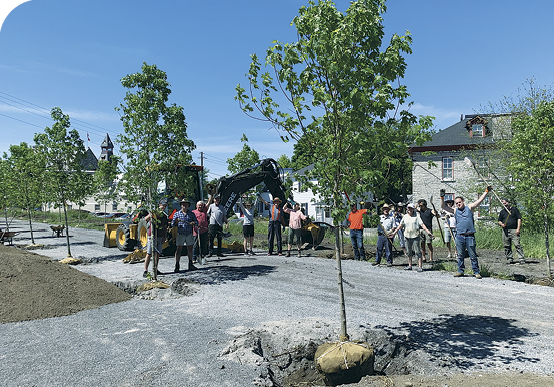
In June, the final phase of a project that has been over a year in the making started actually “taking root” along the Ottawa Valley Rail Trail (OVRT) in downtown Almonte. More than thirty volunteers helped plant 102 lovely large maple trees — all paid for by local donations — along the “Almonte Alameda”.
Key organizers Stephen Brathwaite, Ed Lawrence and Ron Ayling were full of praise for the volunteer planters and local donors, as well as Cavanagh Construction and Merv Logan for donating soil and Don’s Meat Market for donating cold water (and pepperoni!). The project has also been embraced and supported by both Lanark County and the Municipality of Mississippi Mills.
Although the weather was pretty hot on the day that the trees arrived, Ed Lawrence was delighted to report that: “People jumped in to help plant them in the same way they did with (financial) support. Some have even said that ‘if you don’t have enough for us to do today, we’ll come back tomorrow!’”
The Town of Carleton Place has also embraced the OVRT and has a significant investment in Carleton Junction — a stopping point for users of the Trail and a way to direct them into the downtown business community. According to Stephen Brathwaite, “Mayor Doug Black came to see what we’ve done in Almonte and to learn from our experience in order to do a similar ‘Alameda’ in CP. We talked about mobilizing the community to fund it and also about the importance of the use of sugar maples as a single species. The sugar maple is the brand of Lanark County as the Maple Syrup Capital of Ontario, and the aesthetic impact of the single species and consequent slash of consistent colour in the fall will be spectacular.”
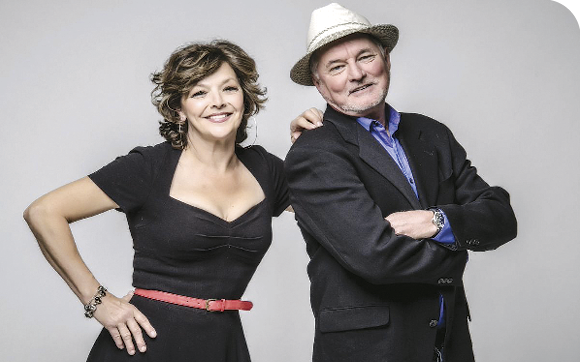
Each year, the Almonte General Hospital Fairview Manor Foundation has four signature events to support our patients and residents, ensuring they receive high quality healthcare in our community.
As we look at 2020, three of our four signature events have had to be postponed until 2021. This challenge presents us with an exciting opportunity to develop some fresh ideas and create some new fundraising events that will continue to support patient and resident care at the hospital and manor.
AGH FVM Foundation has created an Evening at Home Gala, a fundraiser that features sumptuous summer food prepared by Almonte’s finest restaurants — Heirloom Cafe and North Market — on Thursday, August 27 beginning at 6pm.
The Gala Experience Includes:
Six mouth-watering small plates prepared with fresh local ingredients and highlighting the culinary specialties of the chefs that work and live in our community
An exciting online auction with a variety of fun and interesting items (opens on Friday, August 21 at 8am and closes Saturday, August 29 at 8pm)
Door prizes drawn throughout the evening
A concert by friends from Rip Roar Music: Tracey Brown, Randall Prescott and friends broadcasting via YouTube (only available with purchase of a ticket) into your dining room, backyard or summer room. Kaylen Prescott is the video director/editor.
Words of Welcome from Foundation Chair Rob Scott
An update by Hospital President and CEO Mary Wilson Trider
Thank you and acknowledgement to partners
Only 150 tickets are available, at $150 per person (tax receipt of $75). For more information please contact Louise Beckinsale at <lbeckinsale@agh-fvm.com> or 256–2514 x226.
AGH Spring Dance
Please note that the Spring Dance that had been rescheduled to August 29 has been postponed until next year. Hold on to your tickets — the date is confirmed for April 24, 2021 at the Civitan Hall.
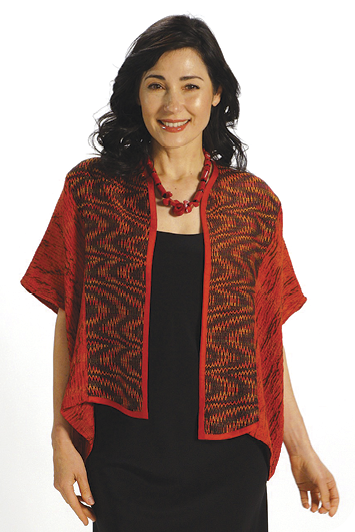
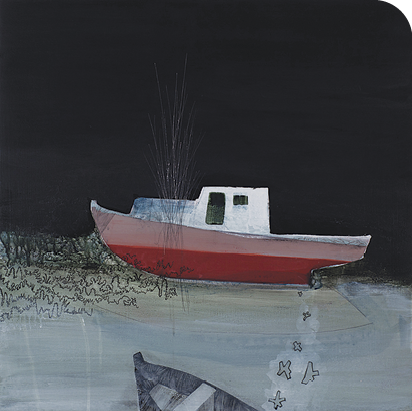
Weaving is Unlimited!
Cheryl Straby of Strévé Design Studio Boutique and Gallery is pleased to announce a summer exhibition of handweaving by Weavers Unlimited, opening June 29.
Founded on a shared passion for handweaving, Weavers Unlimited is a collective of dedicated artisans who strive to explore the intricacies of handweaving and develop new approaches to creating woven fabric. The group has gathered since 2003 to share their interest in mastering traditional techniques, investigate complex and innovative weave structures, and explore the fascinating effects of colour and non-traditional materials. During this time each member has also pursued their own weaving interests as well as collaborating as a group on many exhibitions in Ontario and New York State.
In this exhibition and sale, the Strévé Gallery will showcase new handwoven wearables, accessories and décor textiles. These pieces capture the personal style, expertise and interest of each weaver. The diversity of techniques and approaches is evident in these pieces and reflects the unlimited possibilities of handweaving.
The members of the group participating in this exhibition include local Perth weaver Lise Loader, Mary-Anne Dalkowski of Fergus, Jean Down of Nepean, Ellen Good of Ompah, Karin Hendriksen of Nepean, Roberta Murrant of Dunrobin, Anne Rombeek of Kanata, and Deb Templeton of Ottawa.
A shared passion to innovate and inspire will be apparent in this exciting collection. Strévé Design Studio Boutique and Gallery is located at 64 Gore Street E. in Perth. For more information, call 267–0230 or visit <strevedesign.com>.
Michael Pittman: Hard, Hard Times
From July 22 to August 28, 2020, Sivarulrasa Gallery is pleased to present Michael Pittman: Hard, Hard Times. A native of Corner Brook, Newfoundland, Pittman’s paintings examine elements of Newfoundland and Labrador’s history, vernacular culture and folklore in a contemporary context. His works are often introspective and highly subjective, using a personal lens and a striking visual language that he has developed over nearly two decades.
The title of this exhibition comes from a Newfoundland folk song Hard, Hard Times that has inspired the artist. “There are universal parallels throughout the lyrics that resonate particularly loudly for me these days, in both personal and societal contexts,” he states. The song presents life as a series of tribulations, with each verse outlining a particular hardship faced by a fisherman/livyer.
Michael Pittman received his Bachelor of Fine Arts degree from Memorial University in St. John’s, Newfoundland, and a Master’s degree in painting from the Waterford Institute of Technology in Waterford, Ireland. He has been the recipient of numerous grants and awards, and his work is exhibited regularly in Ontario as well as in Newfoundland and Labrador. His works are held in many private and public collections, including The Rooms Provincial Art Gallery, the City of St. John’s, the Waterford Institute of Technology and Memorial University. The artist gratefully acknowledges the support of ArtsNL, the Newfoundland and Labrador Arts Council.
On Saturday, July 25 from 3–4pm, Michael Pittman will join in live via video link from Newfoundland for a Virtual Vernissage / Artist Talk. You can join from the comfort of your home through a video link that can be accessed on your computer or phone. Please email <info@sivarulrasa.com> and they will send you the link. For more information, visit <sivarulrasa.com>.
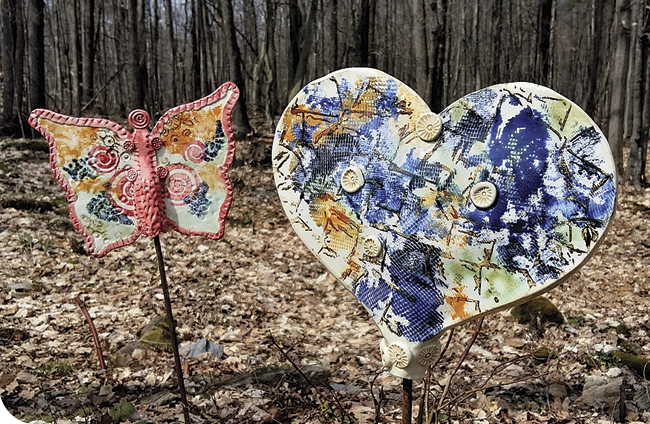

Art… and Soul
Whether it’s in her pottery studio or in her garden, Barbora Balaban’s work is inspired by her love of nature. She has hiked and camped across Canadian wildernesses and farther afield in Argentina, Chile, Nepal and Iceland. Her unusual sculptural pottery compositions are a stunning testimony to her love of the great outdoors.
Balaban loves to have dirty hands. On her website she writes: “In my mind dirty hands means challenge, relaxation, creativity, inspiration, play; building sandcastles; digging and planting in the garden; making pots of clay.”
Most of her pottery is functional as well as highly and originally decorative. Pots, plates, pitchers, vases, mugs — her work is stoneware pottery that has been high-temperature fired in oxidation — rugged as well as beautiful. All have unusual shapes. She experiments with distorting and altering wheel-thrown pieces, and adds texture by stamping, folding, carving or simply adding more clay. She juxtaposes glazed and unglazed portions to bring out the texture and the warmth of the clay. And then she tops it all off by personalizing each piece with distinctive decorative brush work, carving and stamping, to create fascinating pottery works of art.
The great philosopher Arthur Shopenhauer wrote: “The power of nature is such that it’s what all art strives to be. The more we can get in tune with the harmony of the planet, the more our art can benefit from that relationship.” Balaban recently received expert affirmation that she is potting from a harmonious space when she was awarded membership in the Kanata Civic Art Gallery. She received feedback that the three external professional artist jurors enjoyed “the juxtaposition of the large, almost brutal shapes and the delicate patterning of the glazing.” One juror “found her patterning ‘fascinating,’ her work ‘rustic and yet alluring’”. Another admired her “Monet-like palette” and commented that her large and clunky shapes contrast with the detail, causing an interesting dichotomy… “beefiness vs. delicacy.” Much like nature.
Why Barcha Pottery Studio?
Balaban was born in Prague, and in Czech, all names have other nicknames. Barbora can be called Bara, Barborka , Baruska, Barka and Barcha — it is all the same name. This explains the name of Barcha Pottery Studio. Barbora (aka Barcha) graduated from the Prague College of Graphic Art where she studied the design, printing and production of packaging. She was always drawn to three-dimensional work but had no opportunity to work with clay, instead exploring the beauty of weaving, tapestry and lace making.
Even as a ten-year-old child Barcha understood the repercussions of the Communist repression at the end of the “Prague Spring of 1968” and remembers always wanting to leave, despite the natural beauty of the country. Eventually in 1989 she and her husband Alex, whom she met while rock climbing, moved with their two children to Germany to apply for refugee status en route to Canada. They arrived in 1990 with six hockey bags full of camping gear and a few clothes; when they weren’t working they were hiking and driving and canoeing and sea-kayaking their way across Canada. Their Karelian Bear Dog (a national Finnish Treasure) was their constant companion and faithful lookout. No bears harmed or were harmed, and they felt safe.
When they settled in Ottawa in 1995, Barcha finally got the chance to try pottery. She had always done something with her hands, starting in her grandma’s garden, and by 1997 she was going to the studio twice a week. Her husband bought her a wheel and she started selling her works soon after at the Ottawa Guild of Potters annual sales. In 2003 she became one of the founders of the Gladstone ClayWorks co-operative pottery studio. She has taken courses at St. Lawrence College, Fleming College in Halliburton, and numerous workshops offered by the Ottawa Guild of Potters and by Fusion (Ontario Clay and Glass) with top Canadian and US Potters.
In 2007, she opened the Barcha Pottery Studio from her basement in Kanata and started selling works at the Carp Market, and in 2009 she started teaching pottery classes. In case anyone is interested, she owns too many pottery wheels, given that she mostly does hand-built pieces now. In 2015 she received the Honorable Mention Award at the Ottawa Guild of Potters Spring Exhibition.
Balaban is extremely grateful that she enjoys an ideal situation to cope with COVID-19 challenges and uncertainties. She continues her job as production coordinator for an Ottawa printing company, and enormously enjoys the two extra hours she gains each day by working from home. Instead of a tedious and stressful commute, she has repurposed the time by adding to her second-favourite hand-dirtying pastime — gardening. In 2013 another lifetime goal fell into her lap. She and Alex had always wanted a home in the country, and a friend had said, “Don’t worry; the house will come to you.” And it did. A wonderful log house on five acres only ten minutes from Almonte is their happy place.
Her garden is beautiful and fulfilling. Like her excursions into the wilderness, Barcha’s gardening is a constant source of inspiration for her pottery. She calls her current body of work “Permanent Garden.” Her gardening advice is priceless: “The key is to plant what grows.” Take it to heart gardeners — it’s irrefutable. Partly as a pandemic-coping mechanism, Barcha has started growing herbs and creating tinctures that she shares with family and friends. Her daughter finds that feverfew eases her migraines, and now Barcha doesn’t have to wait for her sister to bring her a nasturtium tincture from the Czech Republic. Nasturtium was first introduced in Europe from Peru in the 1600s and has been used for thousands of years as a medicinal plant, primarily for its healing and disinfectant properties.
Instead of the “Where” list of shows and shops and openings that previously would have appeared here and on the back of Balaban’s Artist Trading Card at the top of this page, COVID-19 currently limits our options to visiting <barchapottery.wordpress.com>. It is definitely worth a visit, and think of all the commute time you’ll save! If you’d like to purchase a uniquely “organic” pottery creation, contact her to schedule a safe appointment to pick it up at her studio. You might get a look at the garden too.
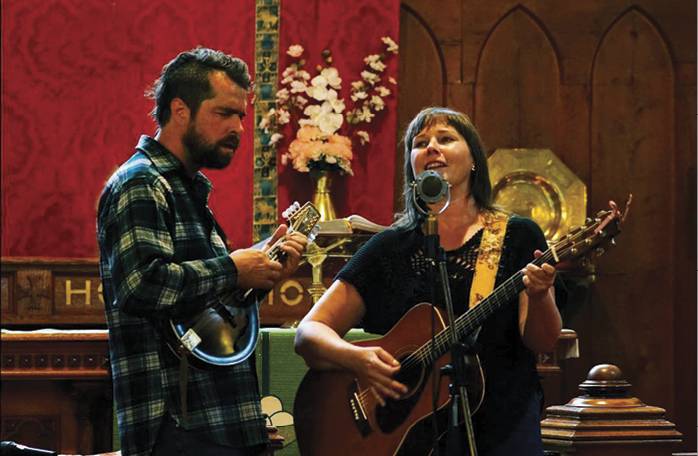
theHumm is reaching out to members of our Ottawa Valley community to ask how they are finding ways to use their gifts and skills in these challenging times. Today’s subjects are Joey Wright and Jenny Whiteley — an award-winning pair of musicians who are also happen to be married (to each other, no less!). We contacted them to find out how all this togetherness is influencing their art, and what their hopes and plans are for the future as performers.
theHumm: Do you have any advice for couples who never had to spend as much time together before lockdown?
Jenny: We find we are both happier when we are working on a project. I think having a mutual goal is a great way to stay connected.
Joey: Another important factor is being ok with changing your plans if you want, checking in on how each of you are feeling and being open to scrapping all your day’s plans and go for a hike or stay in bed and watch a movie or cook all day.
Jenny: A little trick is to check in like you would with a co-worker: “I’m just going to load the truck up and go to the dump. When you’re done mowing the lawn, let’s have tea and talk about dinner.” I like this because you are creating space to be alone but staying connected.
One funny thing we have noticed, is that we have not come downstairs in the morning in our pjs this whole time, which would be fairly standard normally. We have our two daughters here, so maybe we are subconsciously creating routine by starting the day that way. Plus family yoga at 6pm, which is a nice way to divide the day from the evening.
What plans have you had to cancel, and have you found ways to “pivot” and explore other options?
Jenny: We are finishing a record of original French songs currently. We had plans to be in the studio on Wolfe Island with Julian Brown and Chris Brown (no relation, brothers from different mothers). When that became a no-go, we asked the musicians to record their parts remotely and send the recorded parts to Chris to mix them. The interesting thing is, we realized that while we would have all been listening to the parts these musicians were inventing and asking them to change a note here or there if we had all been in the studio, the truth is we hired these artists to do exactly what they do and now we haven’t even listened to their parts at all! We are waiting for the mixes to be done and then we’ll get to listen to what we have all created spontaneously. We’re really looking forward to it!
What does a best-case scenario look like for you in terms of being able to return to performing?
Joey: The ideal scenario is when people are allowed to gather and feel comfortable being in large groups. I’m happy being creative at home. We both love to perform but we have a list of projects as long as your arm, and to get to those is a strange kind of blessing.
Jenny: We have done a couple of guest appearances on the internet over this time, but we are not that keen on the technology and the sound quality. We have enjoyed some concerts by friends of ours, but mainly seeing them is the fun, the audio is always glitchy here in Elphin. We kind of like it that way (wink, wink).
What kinds of support would be helpful – either from institutions like arts funders or from the community at large?
Joey: It’s always important to have funding to create. When Ken Burns makes a documentary series about this era, it will need a soundtrack. Only music can really capture the essence of what a society is experiencing. Some may not think it’s essential, but imagine Apocalypse Now capturing the feeling of the Vietnam War and the sixties without a soundtrack!
Jenny: Writing and recording are the things that musicians can be doing these days, and in fact some touring artists have not had this opportunity in many years, if ever. Many of our peers are realizing the amount of stress and fatigue constant planning and touring can bring. In many cases, I think musicians will change their old habits after this. Flying all over the world to put on a show loses its relevance a little in this time.
What are you personally most concerned about at this time?
Jenny: The happiness and mental health of our family. Our daughters have been great examples to us. They started keeping journals in March tracking their daily routines and including things like outdoor time, reading, self-care, baking etc. As a family we decided early on that what was making us happy was the priority. We allowed the outside world to recede instead of allowing it to dictate our activities and priorities.
Joey: Knowing that our extended families are all safe and well has been so important.
What are you optimistic about in terms of what happens to our community during and after the pandemic?
Joey: I am excited to see what happens to the “locavore” movement. People are interested more than ever in knowing where their food is coming from and the impact it has on the planet, the land and the animals involved. It seems like everyone we talk to (virtually, ha ha) is building a greenhouse or starting a garden or raising chickens.
Jenny: I also think it’s good time to address guaranteed basic income. I look forward to getting the data about how CERB and other programs affect the wellbeing of the population, even and especially during crisis. It’s a concept I have championed for many years and I hope this can lead to opening more minds to the idea of looking after people’s basic needs, and empowering each citizen with the wherewithal to make decisions about their own lives and futures.
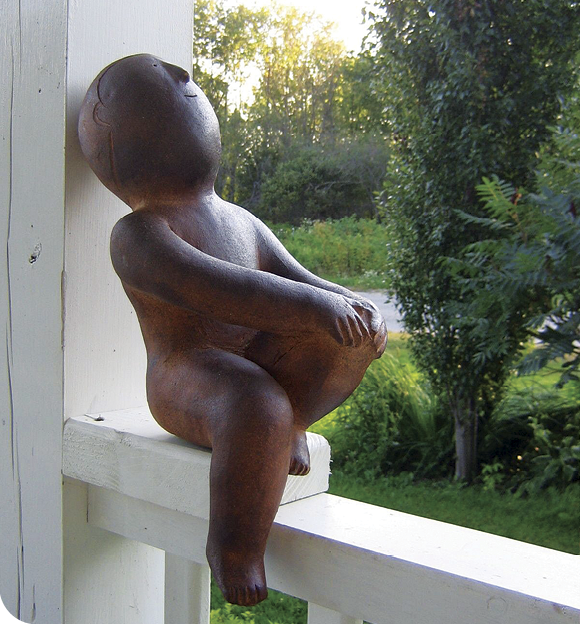
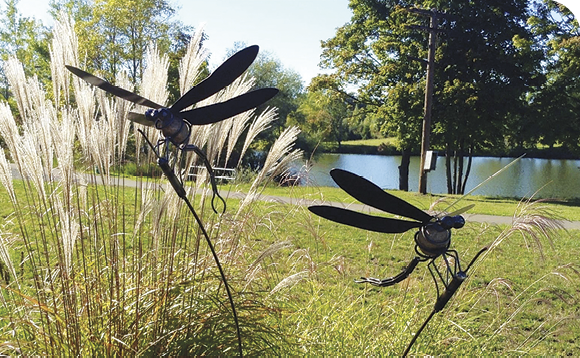
For many years gardeners have marked their calendars for the third week of July when the display gardens and daylily field at Whitehouse Perennials are in full bloom. This year there is another reason to make the trip to Almonte — our Garden Art Show and Sale.
The display gardens and daylily field are a great venue to showcase garden art! Beginning on July 21 the work of twelve artists will be installed, and it will remain in place until August 3. The gardens are extensive and the art will be placed throughout the entire area, allowing visitors to comfortably maintain social distancing. The lineup of participants includes local artists as well as some from southern Ontario and Quebec.
Doug MacDonald from Rue Royale is well known for his cast sculptures of gargoyles and grotesques, whimsical mushrooms and smiling sun faces. David Card from Peace of Mind Creations uses the natural form and colour of wood to create one-of-a-kind sculptures of animals, faces and even flowers. His work, often with a humorous bent, is equally at home in house or garden. Frank Sammut of Kokopelli Woodworking turns locally harvested wood into unique indoor and outdoor furniture that showcases the natural beauty of the wood grain.
The work of Rusty Girl already graces many area gardens, including our own. From practical items like peony rings, trellises, obelisks, bird baths and much more, Clare’s rusty metal creations will find a place in any garden. Specializing in outdoor art and sculpture, Rob and Sue Thomas of A Twist of Metal turn steel and sometimes stone into original sculptures. Fish, herons, owls and flying geese as well as more abstract creations all come to life in metal.
Whimsical and brilliantly painted little houses, framed in cedar wood and decorated using old copper wire, are the work of Stephane Lavallee of L’art-Verre. Each little house sits on a beaver stick that holds it in place in the garden. The benches and tables of Tuscany Concrete by Design are works of art that are fabricated for outdoor use but could easily find a place in your home. Wildlife, birds and landscapes are all captured in concrete with subtle shadings of colours and patterns.
Glass artist Chris Van Zanten makes weatherproof glass totems and whimsies in a rainbow of colours. His brilliantly coloured glass bird baths, sitting in twisted black metal frames, are always popular. Swinging from a tree, lounging on a little branch or just playing around, Raymond Warren’s enchanting ceramic sculptures can decorate your garden or your coffee table. Each one-of-a-kind piece is hand-sculpted and then wood-fired. This process produces subtle shadings and colours that make the little figures come to life. The brightly coloured characters from Bonnie Lindsay of Garden Daydreams are created using Powertex, an environmentally-friendly water-based textile hardener. They can be left out year-round to add a splash of colour on your patio or in your garden. Norfolk County artist Colin Logan’s handcrafted metal and stone creations will make you smile. Stone and metal birds, flying insects and little “creatures” flow from his imagination. Flora and fauna are the inspiration for the wire art and driftwood mobiles of Betty Letendre. Colourful fish and animals sculpted in wire on driftwood bases are perfect for informal garden spaces.
Garden Art adds the finishing touch to a garden. You can enjoy a beautiful metal or glass sculpture year-round. A bench can be both a resting place and a piece of art. A brightly painted sculpture provides different colours and textures than can be found in plants. This has been a difficult season for artists, with many shows cancelled. We are excited to be able to host this show and feature the work of these talented individuals. Admission is free, and information about the show and the participating artists can be found at <whitehouseperennials.com>.
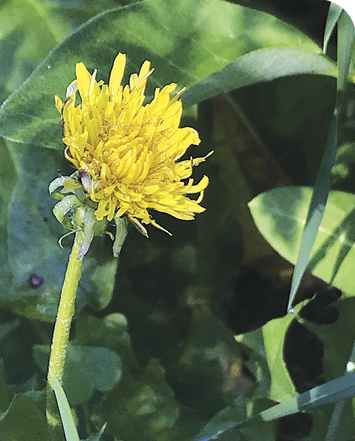
The vision that came to me today, on the summer solstice, while the world continues to grapple with the uncertainty around COVID-19 and rallies to rid our systems of vile toxicity, is a dandelion-covered lawn. It may be an odd association, but I love dandelions and a sea of them registers for me like a wave of brilliant resistance — deep rooted, resilient and unstoppable.
I believe wholeheartedly that plants have much wisdom and medicine to offer us if we spend a bit of time with them observing and learning about their ecological roles, their flavours, their medicinal qualities, and — for some of us — developing a sense of connection to them. I also am beginning to suspect that plants may present themselves to us when and where they are most needed — as a sort of quiet, botanical elder wanting to offer us a bit of advice. This sort of “guidance”, however, often seems to be lost on humans — particularly when coming from a plant that does not suit our taste, seems a bit wild and uncultivated, and (perhaps especially) when its message is something we would rather not hear.
We have become stuck as a culture, I’d argue, with questionable aesthetic norms and ideals, and with hierarchical systems of design and control descended from colonial aristocracies. Think, for instance, of one cultural norm that still holds strong — “the lawn”. In the lawn’s polite and cultured company the dandelion is still an unwelcome interloper that must be controlled. Is it not time to question our prejudices and to transform our landscapes of domination — where plants, animals and humans themselves are denatured and subdued — into landscapes where we trust and allow the wild wisdom of the earth and all beings to be fully and freely expressed? For many of us this might require a period of certain discomfort, and also a great willingness to let go! But what would this look like? What would we feel like? In what corners of our lives and habitats might we give it a go? What is holding us back?
And what has this to do with dandelions? Perhaps it has to do with re-establishing flow. Dandelion has a talent for loosening areas of congestion or stagnation in the body, and for breaking up and revitalizing compacted soil. Literally and metaphorically, our world, and many of us individually, could use a dose of Dandelion medicine now.
Happily, all parts of Dandelion help to support the systems of digestion and elimination. The root can be tinctured, eaten in soup or made into tea or even a coffee substitute. It is full of inulin — a prebiotic which feeds the good bacteria in our gut. It is also full of minerals pulled up from deeper soils. It has a mildly sweet, earthy taste and is understood by herbalists to be cooling, cleansing, and calming to the body. It is one of the most widely used “alteratives” (herbs that gradually restore proper balance and vitality to the body).
The leaf has been appreciated for centuries as a valuable bitter green — a taste we seem to have forgotten in North America, especially with a diet dictated by an addiction to sweet and salty flavours. The bitter flavour is a powerful digestive stimulant. The side salad, which originally accompanied or preceded a meal, would have included bitter greens such as dandelion or chicory — taken to prime the digestive system. Dandelion’s root is also a common component of bitters (herbs tinctured in alcohol to extract their beneficial qualities) which are still commonly used today in cocktails.
Finally, the flower itself is full of polyphenols, antioxidants and anti-inflammatory agents that can help protect against many diseases such as cancer, cardiovascular disease, neurodegenerative diseases and diabetes. Some research has suggested that the flower might contain the most medicinal components of the plant. This year, inspired by friend and local herbalist Meghan Robinson (Instagram @clarendonherbals) I made batches of dandelion flower pesto. It is delicious as a dip, on vegetables or pasta, and in salad dressing — and it is brimming with nutrients!
The events unfolding this year are inviting — or rather demanding — a review and reshaping of collective beliefs and systems that do not serve the “whole body”. There is a backlog of toxic residue that needs clearing. There are compacted, static beliefs that need loosening and revitalizing. Our society needs its own “alterative” for deep and lasting healing. But like Dandelion medicine, these results will only happen through prolonged and deliberate practice.
So why don’t we start now by taking some time to reflect on the dandelions around us and rethink any long-held responses to them as undesirable, invasive and disruptive in our blind adherence to “the lawn” and other archaic and sometimes oppressive ideals. Look at how bright and beautiful they are and ask what prevents you from seeing this and praising them! Begin drinking Dandelion tea. Incorporate a leaf or two into your salads. Collect the flowers and make some pesto. Learn to celebrate the bitter flavour! And thank Dandelion for its abundant gifts!
For more on Dandelion and other featured plants, visit <instagram.com/pineoakyarrow>.
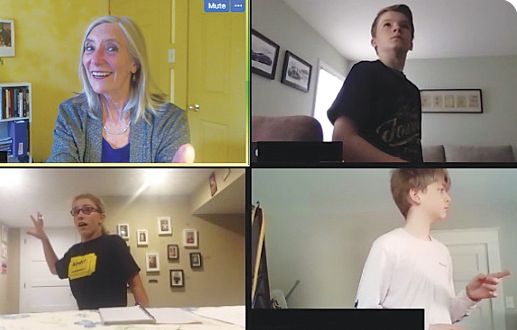
Amanda West Lewis is an actor, author, and founder of The Ottawa Children’s Theatre (OCT). We contacted her to find out how the OCT is rising to the challenge of providing creative instruction to kids during this time of social distancing.
theHumm: You live in Brooke Valley but have been active in the Ottawa youth theatre scene for many years now. Are you finally getting to work from home? If so, what have you enjoyed about it, and what are you missing?
Amanda West Lewis: I’ve been lucky to have had Brooke Valley as my base for the last thirty years. But I’ve also lived in Ottawa off and on, which has allowed me to be part of the vibrant arts community in that city. For the past six years running The Ottawa Children’s Theatre, I’ve worked from home during the week then gone to Ottawa to work in the studios with the kids on the weekends. It’s really been the best of all possible worlds.
Now, with isolation, my schedule is basically the same, except that everything happens from my Brooke studio. I’m not travelling anywhere. I love that I’ve lowered my environmental footprint and that I have a bit more time to get into my garden.
But I do miss being in the same physical space with people — I miss the spontaneity and energy that is generated by the live space. Before COVID, we had twenty-seven classes happening every weekend. The studios buzzed with energy! I loved seeing what all of the different groups were doing. There is nothing more inspiring than watching kids create and share their stories! But now that the courses are taking place on virtually platforms, I don’t get a chance to pop in and watch what others are doing. I’m excited by the classes I am teaching, but there is that sad moment when I hit the “end meeting for all” button, and everyone disappears.
I also miss talking to parents. We were very much an extended family, all dedicated to giving the children and youth the best experience we could. I miss those personal interactions.
You and your instructors have been busy pivoting from live classes to “LIVE Online” classes. What can people expect from this new format?
I’m working with the same core team of dedicated instructors that I’ve worked with for many years. We’ve developed a really strong curriculum that is both fun and teaches specific skills. None of that has changed. Converting to online has meant we’ve made the class sizes smaller so that we can focus on each child as an individual. We’re making sure to take time to listen to each child’s needs.
We’re running Musical Theatre, Drama, Acting, Improvisation and Writing camps this summer. We’ve designed the camps to be really interactive. There is a lot of physical and vocal activity. There is a lot of ensemble and shared work. Even the breaks keep kids occupied — we’ve designed off-screen breaks where campers do theatre crafts. No one is just sitting and watching.
How has the technology been treating you? Have there been unexpected benefits, or major challenges you and your team have had to overcome?
The great advantage of teaching drama from home has been how personal it is. I have weekly Zoom meetings with my instructors, and it’s made us really close. We are sharing all of the joys and frustrations of our lives in isolation, as well as brainstorming how to teach drama online. It’s pushed us to be really creative problem-solvers. Also, the virtual medium is more intimate — we’re talking to each other from our homes, with our art on the walls, our books on our bookshelves, and our pets, children, and partners in the background.
Some of this immediacy carries over to our relationships with students. You need to be attentive at all times when you are teaching online. There isn’t a moment of downtime. So the classes take on a different kind of bonding.
But the really exciting and unexpected benefit is that not only can our students come from all over the world — we have students from Europe and across North America — but our instructors aren’t tied to a location. I have some fabulous actors, writers and composers from New York City teaching for us this summer! They are inspiring all of us with their talent, passion and commitment.
The technological challenge in Lanark County, however, is bandwidth. I get my internet via a satellite and as those of us who live in the country know, it isn’t exactly a consistent signal. I cross my fingers every day that there won’t be a storm while I’m teaching. I’ve also had to make a decision to buy a new computer. I’ve been working on a ten-year old laptop which was fine for admin but not the best for online teaching!
Why is it important to try and keep young people engaged in artistic activities and pursuits even when we can’t physically get together?
Oh, my goodness, where do I start? Drama is all about communication. We work with language and gesture. We work with our voices, bodies and minds to tell our stories. Is there anything more important for young people than the ability to communicate their ideas, fears, hopes and dreams? Especially now, when their voices are diminished because of isolation, young people need the opportunity to be seen by someone who isn’t a parent or teacher. Someone who can hear them and give them tools to express themselves. Someone who can help them to keep their heart and mind open.
Do you think that both children and adults will continue to perform (and watch others perform) while we are not allowed to gather in person?
I think that stories are more important than ever. I think we will always need to watch and listen to other people’s stories. Through story, we come to understand who we are. Story gives us a way to put the puzzle pieces of life into some kind of coherent whole. And I think that people will always need to share their stories, as they have done since the beginning of human times. We became a story telling species the moment we created language, the moment that we understood the concept of time, of birth and of death. I don’t think that isolation will stop that. In fact, I think the need has been exponentially increased.
What are you personally most concerned about at this time?
I’m concerned about the children who have fallen through the cracks. There are countless children who have no access to computers, let alone the kinds of opportunities I am talking about. When we were on-site, I was able to give scholarships and bursaries to kids in need. But now? Who is looking after those children? Who is enriching their lives? There are so many children whose isolation is a nightmare. They are falling behind socially and academically. It is taking a terrible toll on their formative years.
There is a huge disparity between people in terms of how they are able to navigate the pandemic. This inequality in society will, I think, become even more apparent as we transition to the next phase, whatever that phase is.
What are you optimistic about in terms of what happens to the arts during and after the pandemic?
As I’ve said, I think the arts are necessary to give people the skills to understand and appreciate the world around them. I’m incredibly moved by what artists are doing online right now — the kinds of things that are being shared are powerful testaments to the resilience and empathy of human beings.
We are going to have huge challenges coming out of the pandemic. We won’t be going back to the way things used to be. COVID and the deep inequalities of our society require us to make major changes. Re-imagining our lives is not going to be easy. But I think that the arts will give us a voice to build that new world.
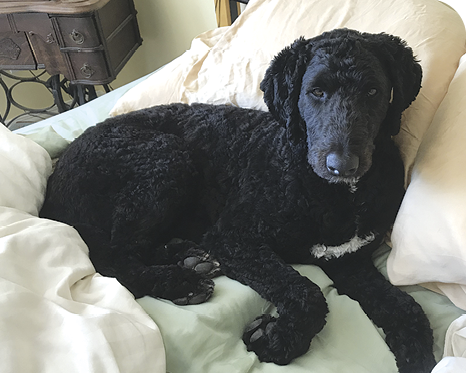
When I was twelve my father and I conspired to get a puppy, a spaniel we could name Mickie, like the one my grandparents had when my Dad was courting my Mom. My Mom was adamantly opposed, saying it would become HER dog, and she didn’t want one. She knew full well that regardless of our whining and total commitment, she would become the owner of the dog. She opined that spaniels smelled of “wet dog” all the time, that she’d be the one walking it, cleaning up the messes, feeding it… and having a cat was plenty, thank you very much! I got a nylon bolero sweater for my twelfth birthday, a poor substitute. We didn’t try again. My Dad never got his dog.
Never have our dogs been more significant than in the last few months. Hugs are out of the question, but it’s not forbidden to pick up one of the dogs for a good hug and snuggle. Other people can pat them, and I don’t go into apoplexy. Nearly everyone on our road has a dog, and we all feel the same: our dogs have taken on new meaning in our lives.
We welcome the feel of dog fur on our finger tips, a little nose nuzzling our knee, and yes, even the barking that occasionally drives my neighbour to distraction. (I’m really sorry about it too, and try to mitigate the racket when I can.)
Our isolation has not been a problem: the woods allow us plenty of exercise, especially when the dogs are happily exploring, chasing chipmunks and inaccessible squirrels. They make us laugh even when they are on their own agenda and won’t come back when we call. They distract us from the angst of disease at our doorstep, play as if life is beautiful, no worries in the world unless the food dish is empty. They took us through the joys of spring and now into summer as if nothing were amiss in their world.
Indeed, they are right: everything is normal for them. We still get up at 6:30, we still walk twice a day, I still throw the ball until my arm aches. And when we are done I pick up Diva and give her a hug, and she brushes my face with a kiss, her version of “Thanks, Mom.”
When the pandemic was in full swing in April, I made a special effort to give them some agility training. All of them were happy to see a jump they could use, a ball with treats hidden in the centre, and some commands they could follow. What a joy to see that none of us had forgotten our routines!
In the evenings when the dogs settle, we get the full benefit of dog fur. Brandi sits beside me and lets me run my hand through her silky soft coat. It’s a slow stroke that calms us both. Her eyes blink and close, my hand stays on her back, and she relaxes into a snooze. Diva is at my feet, as close as she can get. Bonnie, full-coated and always warm, has her own pillow between our chairs. All cares dissolve as we sink into the quiet of evening. We can convince ourselves that life is going on around us as normal as it can be at this time.
While not the best of conversationalists, the dogs are the best of listeners. So all day long I can tell them what we’re going to do, that they have to stay home, that it’s woods walk time, that “this radio programme isn’t something you should hear”, just about any bit of trivia I want to say, and they respond — or not, as it pleases them. I can’t imagine being silent and alone, as I know so many have been. When conversation runs out, we can simply sit together and talk nonsense, like “does the puppy need a belly rub?” I know they hear “blah, blah, blah…treat, walk, car” but that’s all right; at least we get to hear our own voices too.
The dogs provide entertainment without commercials. They’ll tug on toys, chase each other, bother the cat and argue over the treat balls, all in a bid for attention. We can watch their antics until they tire of playing, no matter how long that takes. It’s our private live programming!
Every fibre of our being responds to the lure of our pets, either cat, dog, bird, or — well, maybe not fish. Animals are tactile, and have proven beneficial in so many ways as people navigate change. They never judge, just love and trust that their owner will return the favour. Our families may be far away, but these cherished pets are right here, right now, the best most faithful companions any of us could ever have.
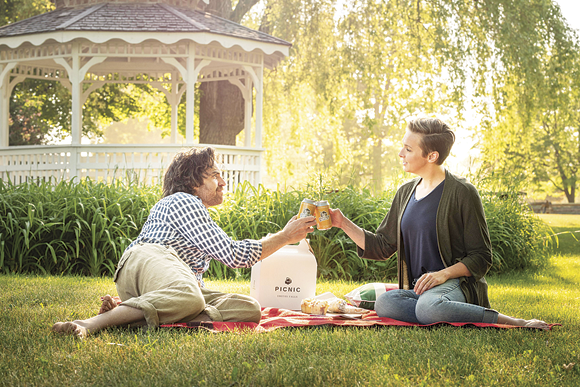
Picture this: it’s a warm summer evening, the sun is filtering through shady trees, and the gentle sound of nearby water provides the perfect backdrop to a delicious picnic prepared for you by top-notch local restaurants. And when you open your picnic box you find free gifts! If this sounds appealing to you, then Smiths Falls is the place to be this summer.
The Town of Smiths Falls, in partnership with participating restaurants, is pleased to announce the launch of a new take-out dining program — PICNIC Smiths Falls. This exciting new initiative offers a relaxing physical distancing “picnic in a park” experience.
The program was officially launched in June, and now features offerings from The Pickled Pig, Boomtown, C’est Tout Bakery, Chuckles Jack, Harvest Social, Perfect Thyming and Two Guys for Lunch.
Diners are invited to contact one of the participating business and purchase a custom-printed picnic box that includes a meal for two, a Smiths Falls Visitor Guide, a Smiths Falls Heritage Walking Tour guide, and free gifts from the Town of Smiths Falls and partners. Each meal will include two main dishes, two side dishes, two drinks and two desserts.
“With the summer weather officially here, we are looking at how we can best support our restaurants given the current physical distancing restrictions,” explains Jennifer Miller, Manager of Economic Development and Tourism. “PICNIC Smiths Falls is one way that residents and visitors can continue to support our restaurants while enjoying a restful picnic in one of the town’s many beautiful outdoor parks along the Rideau Canal.”
At Lower Reach Park parents can relax while young children cool off at the splash pad before or after their meal, or picnickers can swim at the beach at Murphy Park and then dine beneath one of the many shade trees in Centennial Park. The grassy area and gazebo at Heritage House Museum offers the perfect park-like setting for a romantic picnic for two.
For more details and contact information for participating restaurants, please visit <smithsfalls.ca>.
The challenges of working in a public library in these times! It has been perplexing, stressful, amazing and heartwarming, all mixed in together. Speaking with colleagues in other smaller libraries, we have been overwhelmed with telephone calls, social media messages, emails and even frantic waves on the street. People asking when we are re-opening, if curbside is available, saying how wonderful it has been to watch a virtual story time, participate in a Zoom program, or how fantastic that library staff can pick books for them. While we have had to step up our game and figure out how to connect with our communities, our amazing communities have figured out how to connect to us as well!
While I know of many libraries that are using creative, outside-the-box thinking to engage people, all of the libraries have dealt with the situation slightly differently depending on their municipalities, the layout of their buildings, etc., so I can only speak to my library in this article. At Renfrew Public Library, we jumped headfirst into virtual programming. This included YouTube story times and tech tutorials, podcasts, book clubs using Zoom, and even TikTok videos! We used our podcast <renfrewpubliclibrary.podbean.com> to host a gardening series and a mental health series, and it has become quite popular!
The goal was to lift people up and continue to engage with them. Libraries can help promote positive mental health by providing opportunities to learn, engage, be entertained and connect (even if only on a virtual level). What was incredibly difficult was knowing that many of our patrons have no access to the internet. One of the staff suggested we engage in wellness calls to connect with some of our more vulnerable or isolated patrons. Prior to curbside being allowed, we were at least able to chat and infuse a bit of conversation into their day. The response was heartwarming. Once the province allowed curbside pick-up for libraries, we were able to take connection to the next step. We were immediately flooded with calls requesting pick-ups!
As we move forward and slowly begin opening back up, there is still a ton of work to get done. Our main floor has been completely rearranged, cabling run, new washable keyboards purchased, seating that needs to be replaced… the list goes on. The important thing is that public library staff are working diligently to ensure that when we get to see all of your smiling faces again it will be in a safe space so that sharing, learning and engaging can continue and libraries can continue to uplift communities and promote vital connections.
In the meantime, here are some feel-good reads to boost your spirit:
This Book Will Save Your Life by A.M. Homes
Hyperbole and a Half by Allie Brosh (one of my personal faves!)
The Book of Awesome by Neil Pasricha
The Happiness Project: Or, Why I Spent a Year Trying to Sing in the Morning, Clean My Closets, Fight Right, Read Aristotle, and Generally Have More Fun by Gretchen Rubin
The Overdue Life of Amy Byler by Kelly Harms
The COVID-19 pandemic has had a variety of impacts on our food system. Shortages of some products created a new appreciation for and concern about supply chains that many of us take for granted. foodcoreLGL (Leeds, Grenville, Lanark) is a regional network working to bring to life to the LGL Food Charter drafted by our communities in 2012. While recognizing the many challenges and hardships the pandemic has created, foodcoreLGL members are hopeful that the boom in interest in the food system and demand for locally sourced food will be a lasting, positive shift in our communities.
Local farmers and producers are adapting to the new realities of physical distancing and an increase in consumer demand by pivoting to online sales. Local options for sourcing food are promoted through Transition Brockville, which built a local food directories section on its website, and Lanark Local Flavour, which significantly updated theirs.
Social media conversations about local food abound. The Leeds, Grenville and Lanark District Health Unit (a foodcoreLGL member) reports that collectively, posts from the Health Unit’s Facebook and Twitter page mentioning local food had reached close to 10,000 social media users by early June.
The volume of sales and the number of “direct from farm” boxes of produce and products have skyrocketed. Shannon Miller from Miller’s Bay Farm says: “In this time of unprecedented uncertainty, people want to do all that they can to ensure that their family’s food supply is stable. For many, that means connecting directly with the producer — someone they can see, speak with and trust.”
Many are addressing their concerns about the food chain by taking up gardening or expanding their gardens. At the start of the growing season, people’s attention turned to community gardens and thousands across Ontario successfully advocated to the government to reopen community gardens with certain restrictions. Hopefully this move to closer relationships with our food will bring with it renewed attention to food system challenges and actions to address the negative effects of climate change, the decrease in smaller farms and processing facilities, the issue of food waste management and the need to maintain safe and fair working conditions for all food system workers.
foodcoreLGL’s Food Inventory contains a wealth of links to information about how to source and grow your own food. Check out their series of toolkits for ideas about advancing the goals of the Food Charter in your municipality, schools and home.
foodcoreLGL is a coalition of food activists and organizations who work to take practical steps to realize the vision of the LGL Food Charter. They developed the local Food Charter and resources to help implement it. They organize events like the Good Food in Schools forum. They share information through the Food Inventory, their website <foodcorelgl.ca>, Instagram and Facebook page. Their Stewardship Group has representatives from farming, food production, municipal and provincial government, community health and community food programs.
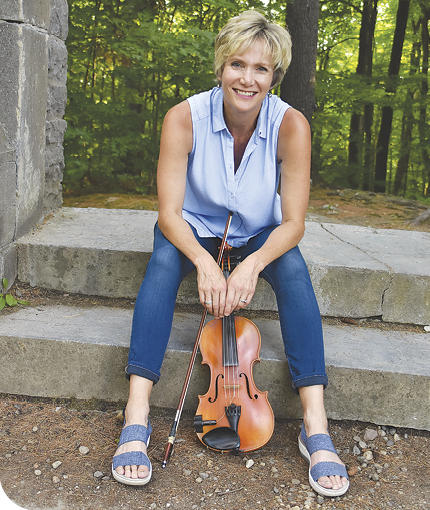
Gordon and Linda Craig — owners of the Perth Manor Boutique Hotel — are bringing a very special musical opportunity to the Town of Perth this summer. We spoke to them about how they are finding ways to safely incorporate music instruction into their summer plans.
theHumm: First of all, how have you and the Manor been faring since COVID hit? Have there been any noticeable changes since this part of Ontario moved to Stage Two?
Linda and Gordon: March had started off quite strong; we had events booked ahead into the summer and reservations were filling in nicely. However, the day the Premier declared a state of emergency we lost $14,000 in cancelled events and reservations and it went downhill fast from there. Although we remained open — we were declared an essential service — guests were very scarce. However, as we move into Stage 2, reservations are slowly coming back. Bookings tend to be more last-minute, but the cancellations have slowed down. Moving forward it will be a matter of rebuilding “traveller confidence”.
Your hotel is a lovely place to stay, and over the past several years you have also built a great reputation for your Music at the Manor events. With live performances being curtailed, what are your musical plans for this summer?
We have planned four Workshop Weeks running Monday to Friday. Each week will feature a fabulous guest clinician on a specific instrument. Over the course of the week there will be four sessions with the clinician as well as a 30-minute private lesson, and a meet-and-greet cocktail gathering. There will be opportunities to explore Perth — to shop and try out some of our great restaurants. We will also serve a formal dinner prepared by Gordon, and the final night will feature a concert performance by the guest clinician!
Can you give us details about some of your instructors?
Week one (July 20–24) will feature folk harp with Sharlene Wallace. Sharlene is one of Canada’s finest harpists and has performed at Perth Manor a few times now. She teaches at various universities in Ontario, plays in several orchestras, and one of her many beautiful recordings can be heard on CBC radio quite often. Week two (July 27–31) will be piles of fun as we feature the fiddle with Kelli Trottier. Kelli was recently inducted into the North American Fiddlers Hall of Fame and was featured on our Canada, eh? dinner event a couple of years ago along with her partner Don Dawson on piano. She has also performed at Stewart Park Music Festival!
After Kelli will be Cello Week (August 17–21) with Erika Nielsen. We have known Erika since she started in the Kingston Junior Strings! We watched her grow up through the Kingston Symphony and go on to a very successful career performing, teaching, and publishing books. Our workshops will conclude with Jana Starling on clarinet. Jana is a nationally and internationally recognized performer-teacher. She is on faculty as Assistant Professor at the Don Wright Faculty of Music at Western University. She teaches at the International Music Camp, the Inter-provincial Music Camp (Ontario) and is the co-founder of the Lift Clarinet Academy — an innovative summer program in Colorado. She has numerous award-winning recordings to her credit and tours with the Ironwood Trio. We are very happy to have her to round out our Workshops!
Describe the students you are hoping to attract to these workshops.
The workshops will be geared to adult amateurs at the intermediate level. Players with community bands and orchestras, and/or those taking private lessons looking for additional experience.
Why do you think it is important to continue to try and engage people in creative activities even with the challenge of maintaining safe practices and physical distancing?
I think one of the things that has become evident in this pandemic experience is how important the arts and creative outlets are to people. Sometimes that gets lost in budget cutbacks and talks of technology in “normal” times. People have been looking to social media for their arts experiences, and may have to do that a lot more in the foreseeable future. With a maximum of eight participants, these workshops will provide people a safe environment to play with others and improve their craft.
How do you think events of this type can benefit the wider area?
Built into the schedule are times to get out and experience Perth and its beautiful surroundings. There will be opportunities for participants to go to local restaurants, hike, cycle, shop, canoe and kayak, and we have arranged for a private walking tour of Perth with our very own Town Crier (and Queen’s Music Grad) Brent McLaren. I hope our guests will see how much Perth has to offer and will plan to return in the future when even more things are up and running — our festivals, theatres and so on.
What are you optimistic about in terms of both music and small-town tourism as we emerge from the pandemic?
I hope that people involved in our workshops will have a memorable musical experience in an elegant setting that promotes our beautiful town and all it has to offer. In the broader sense, I also hope people remember how important the arts are when it comes to our education system and arts funding in the future. I think the experience of this pandemic has shown people how much the arts are taken for granted, and we really need to change that. When times are tough, people turn to music, art and dance for strength, relief and reassurance. We need to nurture that, and both Perth Manor and Perth, Ontario are great places to do just that!
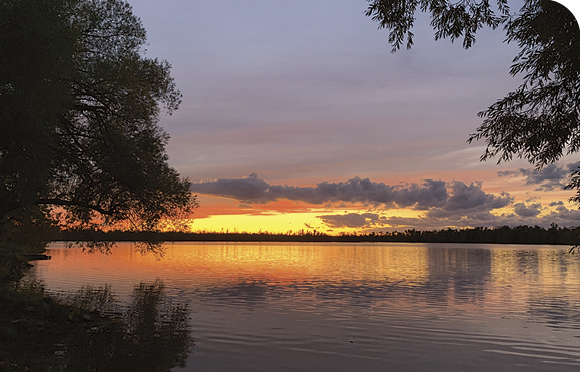
I love reading about where famous authors wrote their books. It’s no surprise that many of them cherished peaceful, quiet, isolated places in which to write — sheds, huts, cabins and cottages, many of them quite modest.
Dylan Thomas, for instance, wrote poems and stories in a small wooden boathouse in Laugharne, Wales. The place was tiny but serene, and overlooked the River Taf. Virginia Woolf wrote in a shed hidden away in the garden at Monk’s House in Sussex, England. Sparsely furnished with a large writing table and several chairs, the view and smell of the garden must have been lovely.
The playwright George Bernard Shaw built himself a 6-square-foot writer’s hut in his garden in St. Alban’s, England. The cabin rotated on a circular track so he could always see the sun. Henry David Thoreau, of course, wrote Walden in a tiny cabin on Walden Pond in Concord, Massachusetts. Anne Morrow Lindbergh wrote the beloved book Gift from the Sea in a “bare sea-shell of a cottage” on Captiva Island in Florida. It was quite modest. “No heat, no telephone,” she wrote, “no plumbing to speak of, no hot water, a two-burner oil stove, no gadgets to go wrong.”
Nature fosters creativity. Every one of these authors knew that well. They did their best to shut off the external world, to go off alone, to be without distractions. They tucked themselves away amid nature, and were nourished by lakes and trees, gardens and beaches, evening rains and quiet forest strolls.
A dear friend recently pointed out to me that nature and creativity were two things that Canadians could still safely celebrate. And she was right, of course. In such an anxious, sorrowful, uncertain time, there’s likely never been better occasion to get out of our homes, to venture into nature, and to rest our weary minds. And, if we’re of the mind, to create.
I am writing this, quite gratefully (and with very sincere thanks to the Ontario Arts Council), from Studio House PEC in Wellington, Ontario. The cottage is a converted 1860’s carriage house, open and charming and rustic, a short walk from the sandy beach and the cool breezes off Lake Ontario. I’m here on a writing retreat, finishing a book. This lakeside village reminds me very much of Westport and Perth, and I could just as easily be in either of those places. Much of the Ottawa Valley is cottage country, and beautiful peaceful scenery abounds in the forests and on the lakes, down the trails and off the charming old county roads.
It’s both a blessing and luxury to be here, to go off alone. In this serene space my mind is clear and unhurried. I feel in harmony with the nature all around me. I wake early, well rested, and write first-thing. The only distractions are rather pleasant ones: birds singing in the tall leafy trees, a friend’s cat sidling up for a morning hello and an ear scratch, kids cycling by with treats from the ice cream shop. I write hundreds of words in an easy rhythm, then break for a quick lunch.
An afternoon walk to the water is refuelling and gently soothing — the waves lazily break on the shoreline and the seagulls squawk and fly in swooping arcs over the water then eventually gather on the rocks near the old lighthouse. The cool lake wind is utterly refreshing. The sunlight on my face is sumptuous. I walk back to the cottage, at peace and inspired, then write again until five or six; I only stop when my stomach grumbles or I happen to look up at the clock on the stove.
Many of my writer friends say they, too, are inspired by nature. “It reassures, centres and calms me,” says Carol Bruneau, an award-winning novelist who lives in Halifax, Nova Scotia.
“Nature empties me,” says Edmonton poet, essayist and short story writer Catherine Owen. “Then resurges the energies and sounds necessary to re-feel.”
Nature is restorative, undeniably. It can also cleanse the mind.
“Swimming in lakes and oceans is the only meditation I am happy practicing,” says Jowita Bydlowska, author of the bestselling memoir Drunk Mom.
Getting Out There
Getting to a cottage or a cabin isn’t always feasible or accessible for some. Many artists — and folks in general — find walking to be an inspirational activity, by a lake, a stream, through a park or an orchard. Any outdoor activity can be a balm for a busy mind. In the Ottawa Valley, there’s ample opportunity to enjoy the outdoors. Perth Outfitters rents kayaks and canoes by the day <perthoutfitters.com>, and playing their mini-golf course looks like an absolute blast.
A leisurely stroll about the Purdon Conservation Area in Lanark Highlands <mvc.on.ca> would fill up one’s senses too. Thousands of their beautiful orchids are in bloom right now. The Museum at the Mill of Kintail has just re-opened as well, and so have the trails at Mississippi Madawaska Land Trust properties <mmlt.ca>. The walking tours of Mississippi Mills <exploremississippimills.ca> are always a pleasant escape; the Old Town Hall visitor centre re-opened in late June.
You can also enjoy Pakenham’s distinguished heritage by following their “Museum on the Streets” self-guided walking tour. The scenic Ottawa Valley Rail Trail is also open to cyclists, people on mobile scooters, and folks on foot. And if you’re interested in seeing the Rideau Canal by boat, Le Boat <leboat.ca> in Smiths Falls can set you up with everything you need.
Truth be told, you can find artistic inspiration in a laundromat or a tavern on the corner. You can find it on your neighbour’s porch or on an early morning walk down a tree-lined street. For me, these languid days and nights at a lakeside cottage are fitting the bill rather nicely, and the book is taking shape. I could not be more grateful for this creative time, these winds and these waters — my soul at ease in a very sacred space.
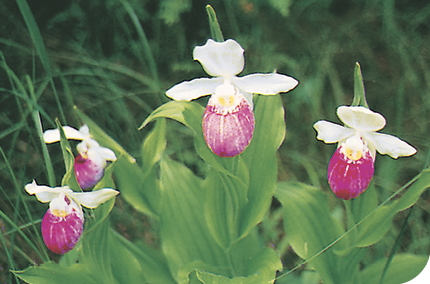
The highly popular Purdon Conservation Area, home to Canada’s largest colony of Showy Lady’s Slipper orchids, is open for the 2020 bloom season. Mississippi Valley Conservation Authority (MVCA) has put the following measures in place to help protect the health and safety of all visitors and staff:
Directional signage: A portion of the boardwalk will be one-way.
Face masks: Given the narrow boardwalk, a physical distancing space of six feet cannot always be maintained and therefore it is recommended that visitors wear face masks.
The porta potty will be opened and sanitized on a regular basis.
Visitors are reminded to practice physical distancing by staying at least two metres or six feet apart when possible, not to congregate in groups, and if they feel ill to stay at home. MVCA is also asking the public to plan short visits to areas that have been reopened to ensure the space can be shared with all those looking to get outside and into nature. Visitors are also reminded to obey signage, keep their pets on a leash at all times and take any garbage with them when they leave.
The typical bloom season is the third weekend of June through to early July. Orchid updates will be posted on <mvc.on.ca/places-to-see/purdon>, Facebook and Twitter, as well as the hotline: 253–1756 x4.
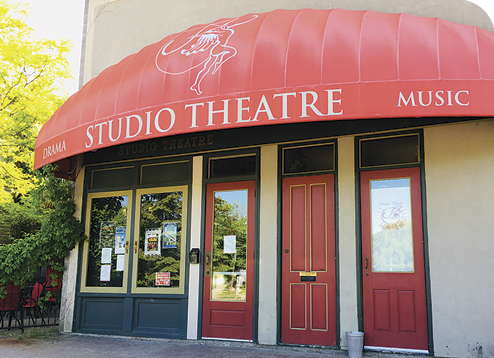
I was in our theatre just a few days ago, remembering the first few plays of our 2019-20 season. We had talented actors in amazing costumes interacting on gorgeous sets, being exposed by brilliant lighting designs. Then we entered into the drama of the pandemic. These days, everyone is slowly trying to find a new normal. Like a phoenix rising from the ashes, our theatre will be back, and the arts will return to Perth Studio Theatre. We are a vibrant community theatre offering film, concerts and live theatre year-round. As Artistic Director I wanted to spearhead some things that would ensure that our beloved actors were not forgotten — to help them weather the storm of the uncertain times we were experiencing.
A committee was formed, and we organized a presentation of Orson Well’s 1938 radio play The War of the Worlds. Over twenty actors took on roles, while one of the actors with her daughter sourced and added in over forty sound effects — everything from boat whistles in the harbor to artillery fire. Everyone involved learned how to work within the confines of Zoom. Everyone who tried out for a part was able to invite two guests, and the Board was invited to listen in as well. Our Zoom host Roberta Peets orchestrated all the rehearsals and the show itself.
The committee’s next initiative was to present an opportunity to our actors to try their hand at playwriting. There is no better way to give an actor appreciation of a role and dialogue flow then to ask them to try writing a play. We were very fortunate to have a playwright amongst our actors, Guy Newsham, who has had several of his plays performed in Canada and the United States. Guy presented a PowerPoint presentation via Zoom to interested Studio Theatre actors, entitled “A 10-Minute Guide to Writing 10-Minute Plays”. Topics covered included play structure, essential elements, formatting and process. We learned that a ten-minute play is about ten pages of double spaced dialogue — between 1500 and 2500 words. Every interested participant went off to try their hand at playwriting, and two weeks later the entries were read over in a blind format — the judges having no knowledge of who the playwrights were. Four promising plays were selected to proceed to the next phase, which involved more rewrites, play polishing, and one-on-one meetings with Guy, our playwright-in-residence. Still to come later in July will be the casting of these four plays, rehearsals, and finally the presentations to all of the participants and the board in a final Zoom session. I anticipate that this Evening of Ten-Minute Plays will be enjoyed and applauded in the same enthusiastic manner as was our radio play. Look to see these little gems live on stage when Perth Studio Theatre welcomes you back to resume our season.
Zoom presentations, although live, are not the same experience as attending a real theatre presentation. Two very important aspects are missing — an audience and a stage. Actors look to the audience to supply the magical energy that brings each character to life. Actors blossom like spring flowers in the rain to the reactions they evoke from you. Remember how important you are to the production when you get to attend live theatre again, and don’t hold back on your emotions. The second aspect of a full-on theatre event is what the audience experiences. Sitting in a cavernous auditorium, the lights go down, the curtain comes up, and you are transported. You, and perhaps a companion, but also every other person in the audience, are linked. You are all on the same roller coaster, the same water slide, and you get to ride it out to the last words spoken, and then to rise to your feet in a surge of accolades.
“Curtain up, light the lights, we’ve got nothing to hit but the heights! We’ll be swell. We’ll be great. I can tell, just you wait!” (from the musical Gypsy).
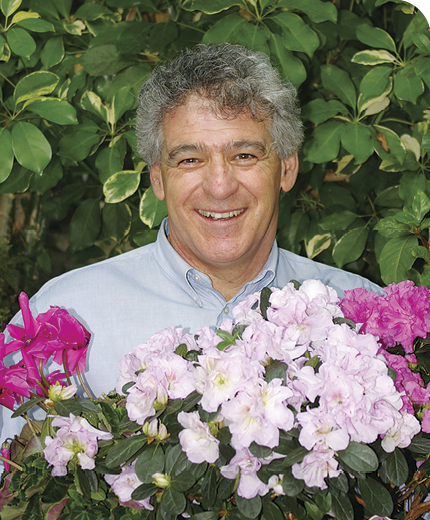
It’s no secret that the forests and wetlands within the Mississippi and Lower Madawaska watersheds provide us with countless environmental and health advantages. Being in these wild areas can give us many emotional, spiritual and physical benefits. They also purify both our air and water and provide homes for so much of our favourite wildlife. Wild areas are a key resource in our efforts to slow climate change because they sequester large amounts of carbon from the atmosphere.
The Mississippi Madawaska Land Trust (MMLT) is a volunteer-based charity committed to ensuring that wild landscapes are protected for us, our children and grandchildren. MMLT stewards over 2,500 acres in the region — some lands it owns, other lands on which it has a Conservation Agreement with the landowner.
Over the past few months, many of us have gained a new appreciation for how vital our natural areas really are. You may even have been among the hundreds of visitors we’ve seen since reopening to the public four of our eight MMLT nature reserves: High Lonesome Nature Reserve (Pakenham), cliffLAND (Blueberry Mountain near Lanark), Poole Family Nature Sanctuary (Carleton Place) and Rose Hill Nature Reserve (Denbigh).
Visitors tell us how walking our trails reduces their stress levels, provides much-needed physical activity, encourages artistic inspiration and offers longed-for connection with nature — whether it be watching birds or simply immersing themselves in the beauty.
MMLT relies on the support of generous community members and businesses to continue and expand its work. In normal times, MMLT would be hosting its popular “Discover the Wild” series of field workshops, bringing nature enthusiasts together with expert guides to explore various aspects of the environment on our properties. These and other fundraising events would traditionally provide the income to meet our annual goals. But these are not normal times.
So this year, MMLT, together with radio station Lake 88.1 FM, is trying something new and different. If we can’t bring people together to explore nature, we will bring expert naturalists to listeners in their homes.
At 8am on Saturday, July 25, Lake 88.1 FM will broadcast a one-hour Radiothon to benefit the Mississippi Madawaska Land Trust. Special guests Ed Lawrence (CBC gardening guru) and Michael Runtz (noted horticulturalist and naturalist), will share their experiences exploring MMLT properties and bring to life the intriguing plants and animals found there.
We invite you to tune in to the Lake 88.1 FM Radiothon to enjoy the discussion and offer your support for the important work of the Mississippi Madawaska Land Trust. Phone lines will be open for donations from 8am until 6pm (253–2722). You can also donate online at <mmlt.ca>. This event is sponsored in part by Lake 88.1 FM and the Carleton Place Terrace.
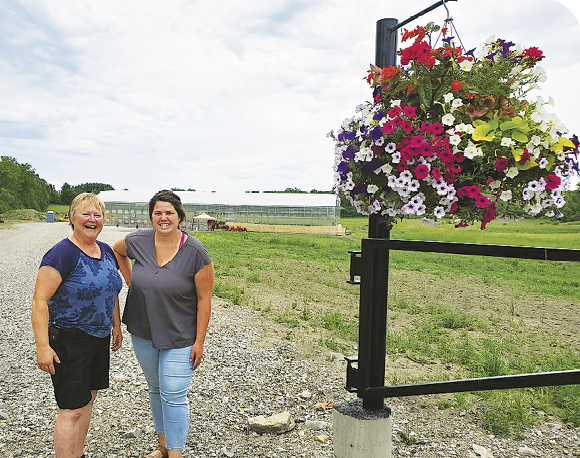
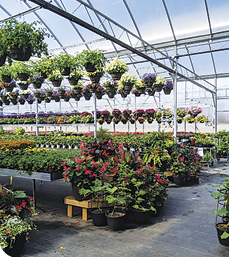
As someone who lives in Almonte and drives to Carleton Place frequently, I was fascinated to see a new, rather large greenhouse develop from the ground up last fall along Ramsay Concession 7A. As someone who prefers not to travel 110 km/hr on the highway, Concession 7A is a wonderful rural road with lots of opportunities to check out the latest bird arrivals (please don’t tell anyone about it!).
Not surprisingly, the business that was unfolding there is not part of a global multi-national empire. Ramsay Creek Greenhouse is a truly local enterprise with perhaps a bit of an unexpected “Mission Statement”. I have led many workshops on an introduction to organic vegetable gardening and have seen how complicated many novice gardeners find the world of gardening. The very refreshing mission of Ramsay Creek is to simplify gardening and make it enjoyable and gratifying for everyone. I am eager to see this vision become reality!
Business partners Elizabeth Salter and Carolyn Styles built Ramsay Creek around this dream of making gardening more accessible to everyone. They perceive that many people find gardening intimidating and they want to show that gardening is for everyone — that it can be accessible, maintainable and affordable. The nursery sells annuals, container gardens, perennials and shrubs, as well as veggies and herbs. In the future they plan to offer workshops, seminars and custom design services. They currently provide employment for five seasonal full-time staff and two part-time staff.
Carolyn was born and raised on a dairy farm in Kinburn. A veteran business owner for a quarter of a century, once she stepped into the greenhouse industry she fell in love with gardening and growing. She has never looked back. Elizabeth studied agriculture, horticulture and floristry. She has been working in the landscape and greenhouse industry since she was just fourteen years old. She has always dreamt of building a greenhouse of her own.
They transformed a field with a forgotten municipal drain into “Ramsay Creek”, an imposing structure approximately eight minutes from either downtown Almonte or Carleton Place. Construction started in August of 2019. The heat got turned on three days before Christmas, but actual planting did not start until the beginning of February. They opened for online shopping in April 2020, and opened for traffic in May as soon as they were allowed to, following COVID protocols.
Their connections with the local community run deep — between incredible family support and a web of support they found in Lanark County, many people gave them excellent guidance about opening up a business.
Further evidence of their commitment to the community was reflected in the construction phase. They were their own contractor and used local companies for everything they could — Carroll Cartage for excavation and grading, SMR for electrical, and Valley Plumbing. They consulted with Niagara greenhouse specialists for the structure, function, and some other aspects.
One small example of local collaboration was with Gilligallou Bird Inc. this spring to design a hanging basket that attracts hummingbirds. It was made up of plants loved by hummingbirds and a Gilligalou feeder that hung perfectly underneath.
Opening in a pandemic had many levels of crazy. Elizabeth observes that “it feels like we’ve lived three years in three months, so trying to remember details of the build/opening is such a haze at this point. I think because we were working so hard to get open in time, once COVID hit we just switched our focus and drove to the next issue. And COVID constantly threw curve balls which affected finishing the greenhouse, deliveries, scheduling, and most importantly selling. You had to make a lot of Plan Bs, then Cs, and Ds, etc. In a way it made things feel normal because our attitude never faulted from go-go-go, but now we’re coming off such a rush and we are all just tired. I think anyone in this industry would say they are tired at this point.”
Where do they plan to go from here? They aim to continue to grow great plants, and to help gardeners bring colour and life to their yards. The plan was to have lots of workshops on growing and designing, so once things loosen up they will figure out ways to host those within the greenhouse. They will have a fall crop, and lots of Christmas designs this year. Next year they will again have a focus on veggies, with more varieties and offerings. Interestingly, the most requested plants this season have been tomatoes and marigolds.
They swear that every day is rewarding as they are constantly learning and growing. And this is something that gardeners can identify with — one of their most rewarding moments was the first time they went to check on the growth of their first seedlings and pulled out a “glorious” pot of white roots — they were actually doing what they wanted to do, which was to grow plants.
I really admire their spirit as they were able to roll with the punches when absolutely nothing went as planned. The major frustration that stands out for them was not being able to hug their family in celebration once the business opened.
Check their website <ramsaycreek.com> or Facebook page for the latest information on hours of business and COVID protocols.

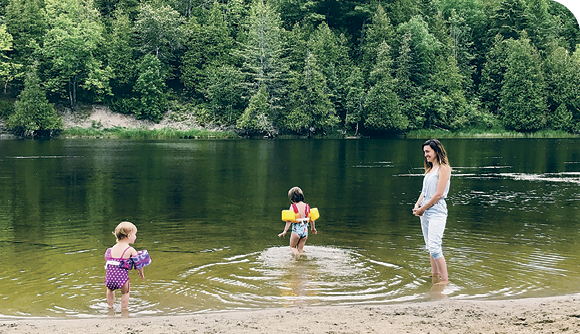
Dear folks with kids: Welcome to the “summerofquarantine” Family Fun List! At first glance, the summer seems pretty daunting with little ones when everywhere you turn your go-to fairs and festivals have been cancelled. No summer vacations outside the province, no Ferris wheels, no concerts in the park. It is going to take a bit of time to rework your family summer traditions, but I hope to help you realize that there is still so much fun to be had.
So take this list and sit down with your family to plan some new memories, and maybe new traditions, by creating your own “summerofquarantine” Fun List. I’ve got you started with fifty family-friendly activities to do in our own backyard — from rafting down the Ottawa River or hiking through Canada’s old growth forests to sleeping overnight in a train caboose! IT’S ALL OPEN! You can have so much fun and stay in line with public health recommendations. So get out there (not too far) and have fun this summer!
Everywhere
Curate a summer playlist on Spotify to give a fun soundtrack to your summer
Download the Geocaching app and head out on a real-life scavenger hunt all over the Valley
Get kids reading through library pickups and the TD Summer Reading Club with so many fun jokes, story starters, colouring sheets and book clubs
Carp
Eat homemade ice cream at Carp Custom Creamery
Attend a Kids Golf Clinic at Irish Hills Golf & Country Club starting mid-July
Book a family campfire or picnic and register for summer camp at Saunders Farm
Almonte
Visit the Almonte Waterfalls (we usually grab an Almonte Ice Cream Shop cone first)
Cool off at the splash pad or hit the skate park at Gemmill Park
Join the summer art club at JB Arts! Camp runs all summer for kids 6–14
Go out for fish ’n chips at the Cheeky Chippy
Order a picnic box from North Market any Saturday and then:
Go play in the rapids at the Mill of Kintail
Learn to sew at “Sew Much Fun” Sewing & Fashion Camp in August (ages 10+) <marglee@teksavvy.com>
Book a sleepover at the Almonte Riverside Inn, get wood-fired pizza from the Lobby Bar restaurant and paddle up the Mississippi to see the sunset on one of the prettiest towns in Ontario!
Pakenham
Pack a picnic and head for a day of fun at the Pakenham Beach
Don’t leave town without checking out the famous Scoops Ice Cream
Go fishing for bass under the historic Five Span Stone Bridge
Teach kids to golf at Pakenham Highlands — it’s free for kids under 16 when with an adult!
Carleton Place
Pick your own strawberries in July at Beckwith Berries
Dance under the rainbow at the Beckwith Splash Pad
Book a game of paintball, laser tag, obstacle course or axe throwing at Marked Adventure Park
Sign up for Canoe Kids Camp at the Carleton Place Canoe Club for kids aged 7-9 will run all summer
Smiths Falls
Visit the Railway Museum — Sunday afternoon pre-book tours starting July 19
Book a sleepover in a Caboose — starting July 1 you can sleep over with the whole family in a real Canadian National Railway or Canadian Pacific Caboose
Visit the locks and watch the boats go through Rideau Canal National Historic Site
DIY yacht cruise with Le Boat! Scrap the east coast adventure and spend a week cruising the Rideau Lakes system
Perth & Lanark
Movies Under the Stars at the Port Elmsley drive-in!
Play mini-golf at the Perth Outfitters
Rent a canoe, kayak or stand up paddle board for ½ day at Perth Outfitters
Check out the skate park and splash pad at Conlon Farm
Go bird watching at Murphy’s Point Provincial Park! You can see all kinds of warblers, indigo buntings, Baltimore orioles, scarlet tanagers, owls, hawks and more. Take the 2km Silver Queen Mine Trail to see an old mica mine and miner’s bunkhouse!
Book a family yoga class (for adults and teens) on stand-up paddle boards on the water with Bobbi at Aruma
Calabogie
Calabogie Peaks Resort has $60 family day passes which gets you into their beach facility, pool, golf course, tennis courts, water sports, nightly campfires and more!
Hike Eagles Nest Lookout in Calabogie
Burnstown
Pack your sunscreen for a day at Burnstown Beach
Order take-out pizzas from Neat Café
Don’t forget your ice cream at Café Laurent
Arnprior & Renfrew
Book a family rafting trip with Wilderness Tours
Hike the Gillies Trail in Arnprior — a 2.7 km trail along the Madawaska and through some of the oldest growth forest in Canada!
Sign up for a day of archery and horseback riding at Frontier Trails summer camp in Eganville
Pembroke
Pick your own blueberries at Hugli’s Blueberry Ranch by mid-July
Starlight at the Skylight in Pembroke – drive-in movie $20/car
Natural Water Slide at High Falls in Algonquin Park — go interior camping at Achray campground and visit the natural water slide on the Barron River at High Falls Lake and Stratton Lake (my dad took my brother when he was two but this really is for more experienced little campers!). You can also hike in from Achray on the Eastern Pines Trail.
Visit the Barron Canyon while you’re there!
Bonus Points: Ottawa
Learn about the history of our Capital region and book an Indigenous Walks Tour — book your group tour at <bookings@indigenouswalks.com>
Take your bikes into the Ottawa Bike Paths to see the Parliament buildings, canal and locks
Almonte Community Coordinators (also known as The Hub) is conducting a survey of local needs and experiences related to the COVID-19 pandemic. The survey is short (ten questions). Results will be shared with the public (once anything that could identify individuals has been removed) and will be used by community groups to help them know how to help.
Anyone over the age of 13 living in or around Mississippi Mills is welcome to complete this survey. We would like to hear from as many residents as possible so we know how you’re doing and where to focus our efforts to support the community. Please consider forwarding this invitation to your local contacts.
You can skip any questions and quit the survey at any time. If you’d like to talk to someone about what you’re going through, you can find support by calling 211 or Lanark County Mental Health at 283–2170.
To complete this survey online, please go to <carleton.ca/emogeolab/mississippi-mills-covid-19-community-survey>. Online surveys are anonymous. To complete this survey over the phone, please call or text our Research Assistant, Casey Gray, at 778–980–3146. Phone-in surveys are not anonymous but they are confidential (we might know who you are but we will not tell anyone who called or what you said).
This survey is funded by a COVID-19 Rapid Response Research Grant from Carleton University and has been cleared by their research ethics review committee (CUREB). Anyone with concerns or questions can reach them at <ethics@carleton.ca>. You are also welcome to contact the project supervisor, Sophie Tamas, at <sophie.tamas@carleton.ca> or 853–8452.
Thank you from Eloise Caverson (President, Almonte Community Coordinators) and Sophie Tamas (Associate Professor, Carleton University).
Weetabix has remarked in previous articles about the historical origins and evolution of the restaurant as an institution. For those of you who have not been paying attention, the term, restaurant, refers to food as a restorative agent for weary workers and travelers. Together with the central social role of meals and the symbolic social importance of sharing food, we came in stages to restaurants as we now think of them; places to be served and eat prepared food while socializing with friends, family and business acquaintances (sometimes they overlap). Restaurant settings vary widely in size, style and formality. Meanwhile, just as dinosaurs were happily (we presume) unaware of astrophysical reality, we assumed that our world changes via what some scientists call continuous processes. Chickens fall victim to the same sort of logic by extending a series of observations of the behaviour of farmers-good until the day the farmer wants a chicken dinner.
A pandemic changes things in many ways and imposes discontinuities throughout society. Some changes are obvious and acute, others result in waves of change which propagate, as waves do, over long distances in space and time. But there are interesting differences between normal waves and tsunamis. Restaurants of all types have been impacted by the shutdowns and restrictions imposed in efforts to contain COVID-19. It is a new disease for which there is still no effective treatment or vaccine. It is also a serious disease with long-term consequences over and above its lethality for vulnerable people. The unfortunate truth is that social distancing, mask-wearing and local outbreaks will be with us for longer than initially expected. There is a great deal of “whistling in the dark” around vaccines, but even if there are available vaccines it will still take time before they can be demonstrated as effective. Continued caution and prevention measures remain the only prudent course of action.
So, are we destined to exist in a world of food trucks and take-away food? Perhaps, but it may be too early to say. Other sectors such as retail and travel are still hoping for a return to normal, and notable prognosticators, including some government economists and politicians, are still telling anybody who will listen that this will be a “short term” event or “V-shaped” in terms of the economy. Weetabix not so much. In other areas such as medical services, the pandemic has catalyzed changes that have turned out to be beneficial to patients and professionals as well. Telemedicine is here to stay because it can deliver more, better and cheaper services in several areas. Similarly, many people now enjoy the practical benefits of not needing to spend a large block of time commuting — of course this is not good for the commercial real estate market. As usual I digress, but economics is to the “invisible hand” as a map is to a pilot. The guidance from either is not deterministic since other factors may make predictions hippopotamus.
Enter the hero of this piece, Ian Carswell. Weetabix previously encountered Ian and his restaurant, the Black Tartan Kitchen, and has followed his development and success since shortly after he opened in Carleton Place. Our first piece started out slowly: “‘Vaut le voyage” is an accolade awarded sparingly by the redoubtable Guide Michelin. Weetabix can truthfully state that Carleton Place is now worthy of a visit for gastronomic reasons. Be sure to make reservations at the Black Tartan Kitchen even if we have none since this is an intimate venue with limited seating.”
And our second piece (January 2020) stated: “Weetabix is in a self-congratulatory mood for having praised Ian Carswell and his Black Tartan Restaurant some time ago (theHumm, July 2017). We are pleased to report that both have continued to develop. Ian has been recognized as an outstanding talent and earned a place on the National stage by The Great Canadian Kitchen Party. For those interested in cuisine and gastronomy, this is an important event and a significant honour.” Indeed.
And nobody predicted that shortly after the Great Canadian Kitchen Party Ian and his wife would meet with their bank to discuss expansion plans based on their economic success. The Black Tartan Kitchen is now “closed until further notice”. This is a personal disaster but also a heavy blow to Ian’s employees, suppliers and customer base. The only good news is that though often complained of, bank inertia resulted in less financial trauma than might have been the case otherwise.
Weetabix called Ian and immediately realized that one of the limitations of social distancing is that sensory experiences are limited by telepresence. For some things this is good; Weetabix usually disables his video feed. Food matters, however, do suffer from the lack of organoleptic and visual inputs so the conversation was mostly about the impact and practical consequences of lock-down and the uncertain prospects.
In his book The Hero with a Thousand Faces, Joseph Campbell describes a journey in stages that are similar to Ian’s journey. The rise to the very top of the culinary profession is in many ways an epic story of challenges to be overcome. The path is long and arduous, demanding not only brilliant execution but day-to-day consistency. The archetypical hero lives in the world of myth and sometimes magic.
Ian and the Black Tartan live in the real world and just outcomes are not assured. The arc of the Journey or Quest has been interrupted, but there are still possibilities for return and — just as Campbell’s hero can return in triumph — we hope to see the resurrection of the Black Tartan Kitchen in some form. Ian is a formidable talent with the energy and enthusiasm needed to recover his business. He is also cautious about “jumping the gun” in a time of great changes which go far beyond the problems of any single establishment. For some restaurants a shift to take-away may be the basis for a future business. That is an unlikely route for the Black Tartan, but Ian is looking at several options. We look forward to seeing his vision of the future of fine dining. In a world of uncertainty, we can be assured that Ian will deliver an interesting and tasty offering.
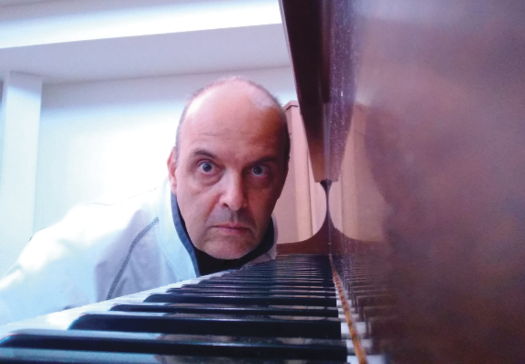
theHumm is reaching out to members of our Ottawa Valley community to ask how they are finding ways to use their gifts and skills in these challenging times. Today’s subject is Mike McCormick — a member of the beloved Canadian musical/comedic super-group The Arrogant Worms and a (normally) active member of the Ottawa Valley live music scene. We contacted him to find out what effect the pandemic is having on his sense of humour, and what his hopes and plans are for the future as a performer.
theHumm: So… heard any good jokes lately?
Mike McCormick: Not really. I’ll be honest that I’m not really a “jokes” guy. Arrogant Worms humour is kind of based on putting things in different situations, not exactly “Guy walks into a bar” kind of stuff. Plus, I have a terrible memory for words so it’s far more likely that I’ll remember the setup, forget the punchline and make up a boring one instead.
This spring has been pretty tough on performers. What musical plans have you had to cancel, and have you found ways to “pivot” and explore other options?
The band was on tour in BC when lockdown began so we had to cancel half of it. We’ll try to reschedule them but we’re a part time act at best and getting to BC is hard. Let’s face it, who’s planning on getting on an airplane real soon?
I was also musical director of Two Rivers Musicals Sister Act which would have closed this past Sunday. No idea when they’ll be able to perform again and whether I’ll be available to be part of it.
I’m the musical director/organist at TSA United Church in Renfrew. We’ve started livestreaming our Sunday service on Facebook, which has been a huge learning curve. The minister jokes that he never expected to become a televangelist. There’s a joke.
To try and learn the technology and just to play a bit I started a weekly concert on Wednesdays I call “Hump Day Hymns”. It’s developed a bit of a following so I’ve continued doing it; now I bring in guests here and there to get some different sounds, opinions and repertoire. It’s also a good chance to just reconnect with some musical friends. Last week I did an Arrogant Worms set so created a bit of crossover.
You have musical friends and bandmates across the country. Are there any notable differences in the ways in which different parts of Canada are adapting to the current situation?
For musicians it’s pretty similar and quite dire. The rise of streaming services has pretty much killed sales of recorded music as a revenue stream so live performance was what was left. Now it’s gone and it’ll be a spell before it comes back. Many acts are doing live streaming concerts and different types of performances. Maybe it’s working for some but it’s pretty much a drop in the bucket. So everyone is taking advantage of CERB, maybe trying to write, get some other parts of their life in order.
But this is hurting musicians hard. Even when things are open again, how many more venues are going to be closed? Will people be willing to go to concerts? Will anybody have any money to pay for a concert?
People love music and it’s almost always better live. We’ll keep that in our back pocket and try and figure it out.
I saw the amazing lockdown version of “I Am Cow” that was put out by the vocal group Peculi8. How did that make you feel, and have there been any other “silver lining” moments you would like to share?
That was awesome, especially as I knew nothing about it being produced. So suddenly, there it was. We’ve been in touch and are hoping to do another song together down the road. Silver linings? People have watched Hump Day Hymns. That’s cool. My daughter is living at home again. I’ve read a lot and watched some old movies. Little moments encased in a suitcase of gloom.
If churches are able to re-open at 30% capacity, do you think that some performance venues (theatres and churches) should be able to as well?
Sure but I don’t see it being much. Bars and restaurants typically pay musicians squat. Now it’ll be 30% of squat. Concerts are generally break even events; now there’s only 30% of revenue possible. Distancing will make it feel really weird. Maybe outdoors can work? It’ll take some creativity, especially to get the artists paid.
What does a best-case scenario look like for you in terms of being able to return to performing?
For the band, we have shows booked next March out west. Best case we can do them at capacity. That requires a vaccine and/or a treatment which is widespread and available. I don’t see it for at least a year. Community theatre, choirs? Same. This virus transmits so easily and is so infectious and so deadly for the elderly and people who are compromised that it has to be beaten. And even so there are people who think it’s not that bad and have said there’s no way they’d get vaccinated. Stopping the spread and a second and third wave will be really tough.
That being said, I’m still performing. It’s what I do. But it will continue to be different for a while. And the cool things I’ve been able to do for years which require big groups crammed in one venue… tough. Besides that, as those clever Arrogant Worms have said, Canada is Really Big. Touring here takes massive time, miles, and money just to get places.
What kinds of support would be helpful – either from institutions like arts funders or from the community at large?
That’s a huge question which I really am not equipped to answer. Maybe the basic personal income is a real solution. If artists can eat, they can live and create.
Arts funding is always important, but I find it really hard to make sense of. Artists who get the most funding are typically ones who write good grant applications. Which really has nothing to do with whether they can paint or dance. We need venues. We need people to want to see stuff. We need it to be taught well in schools.
Man I’m bleak today. Somebody tell a joke. Guy walks into a bar. The bar is closed.
What are you personally most concerned about at this time?
Cheering up, I think. The health and safety of my friends and family. I’m old. I’ve had my shot. I’m going to keep playing and writing until I drop. But I want my kids to be able to see and hear and perform too. I fear for live performance. I had tickets to see Hamilton. I’ve seen some great performances at festivals, great concerts right here, the Neat coffee shop in Burnstown is one of the most unique concert venues in the entire country. I’m really worried about the viability of all of these.
I have little or no desire to watch Hamilton on an Ipad. Listening to Beethoven’s 5th or Bruce Springsteen isn’t as good on my phone earbuds as being there.
What are you optimistic about in terms of what happens to our arts & entertainment community during and after the pandemic?
Hmmmm…
People will always want to create, and music is a form of expression that most people identify with. There are always people who want to play and sing and hopefully people who want to listen and watch. And sometimes the greatest creativity comes out of limits.

I am writing this as an appeal to our community residents when considering whether to wear a mask. I am an active and (so far) healthy 75-year-old retired health care professional. I understand germ warfare and once demonstrated the hidden violence of these invisible critters to nursing students by having them swab their purses and culture what grows on them after being left on a public bathroom floor. You don’t want to know!
I have been a diligent adherent to the rules these past many weeks (now months): I have cancelled trips of a lifetime, not seen my grandchildren for weeks, and continued to do my own grocery shopping every two weeks while wearing a mask and following the pandemic precautions posted. I have been to several stores throughout the area and have been dismayed by several persistent observations:
most customers don’t wear masks
staff in some stores don’t wear masks and don’t always respect physical distancing rules with customers
it’s easy to forget the 6-foot rule when you’re in a hurry to grab your stuff off the shelf and get home safely.
The option to wear a mask is an option for now… but many jurisdictions are debating the possibility of making it mandatory. The messaging from various experts has been confusing over these last several weeks, but here’s the reason why I think there should be no doubt about the need to wear a mask.
Wearing a mask is your spit stopper!! Your spit is likely to be carrying some unsavoury microbe — maybe even COVID-19! It could be lurking in your saliva, nose drippings or sputum even if you do not have a fever, cough or running nose (aka asymptomatic carriers, in medical speak). Masks prevent your spit from getting into my system because the mask stops it. The virus is carried in droplets. That’s what causes your glasses to steam up a little and why your mask needs to be washed frequently. Your excretions are moist and transmittable. So if you cant reliably stay 6-feel or 2-metres away from someone, wear a mask!
EVERYONE should be wearing masks! Clerks, shelf stockers, shoppers. We should all assume everyone is possibly a carrier ready to transmit it. As the experts do more research on this new virus the evidence is building that about 30–40% of infected people have no symptoms.
For the sake of all of us, please wear a mask! This virus is going to be around for a long time yet and we are all getting a little weary of being restrained. There is growing evidence that mask wearing does slow down transmission and could prevent a second wave.
There are LOTS of non-medical masks available — hanging on gates, through Social Service agencies, online and even at Farmers’ Markets. There are different patterns online to make your own. Many generous sewers have been hard at it and their dedication and artistry is amazing.
Please use your influence and encourage your family, friends and coworkers to wear a mask. If you have doubts, go to the Leeds Grenville Lanark Health Unit website at <heathunit.org/coronavirus>.
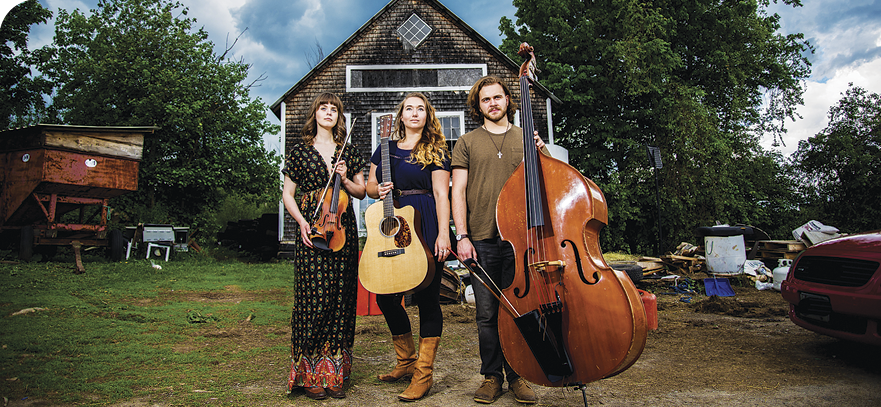
Almonte Celtfest organizers are delighted to announce that they’ll be hosting a virtual festival on Saturday, July 4 and Sunday, July 5. They have coordinated with a number of performers who have pre-recorded video performances — these are currently being produced professionally and edited into a single video that will be broadcast as the virtual festival. It will be posted in two parts — one on Saturday and one on Sunday — and each will run about two hours in the afternoon.
The lineup includes video performances from Jessica Wedden, Jessica Pearson & The East Wind (pictured above), Steel City Rovers, Kelly Sloan, Graham Lindsey and Heather Dale, among others.
There is no fee to watch, as is traditional with Celtfest, but viewers will have opportunities to make donations throughout the festival because every dollar donated goes back to the performers themselves. Links will be provided, and alternative donation methods will be available for those who aren’t comfortable or familiar with Facebook donations.
To participate, you can follow the links from <almonteceltfest.com> or find Almonte Celtfest 2020 on Facebook. And since it’s virtual, kilts and pants are optional!
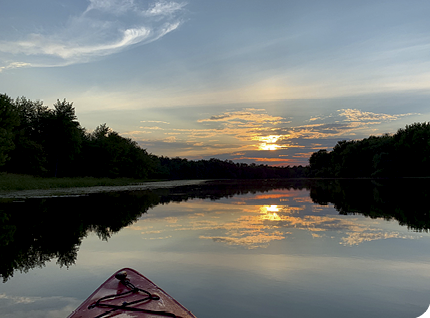
In celebration of National Canoe Day — Friday, June 26 — the Mississippi Valley Field Naturalists (MVFN) created a virtual pictorial tour of the Mississippi River and other waterways and lakes of Lanark Country, as seen from the water. They invited everyone to get out on the water between National Canoe Day and Canada Day to capture in pictures the natural world that we can see from the water in beautiful Lanark County.
After July 4, everyone is invited to visit <mvfn.ca/national-canoe-day> to view the final map and take the “Magical Mississippi/Lanark County Waterways Virtual Tour”. Happy viewing!